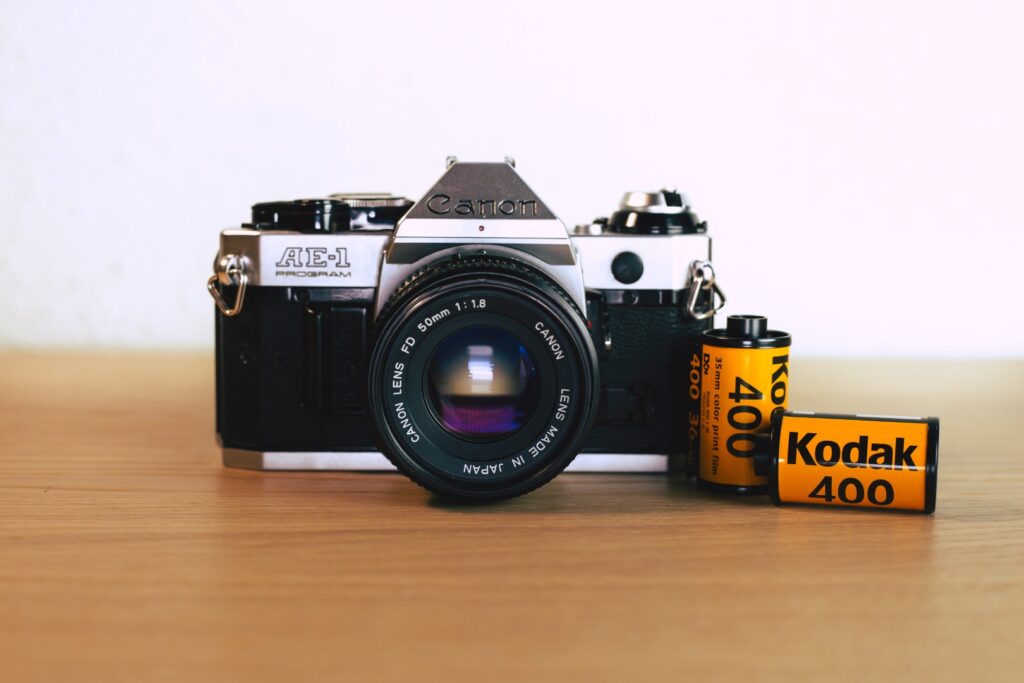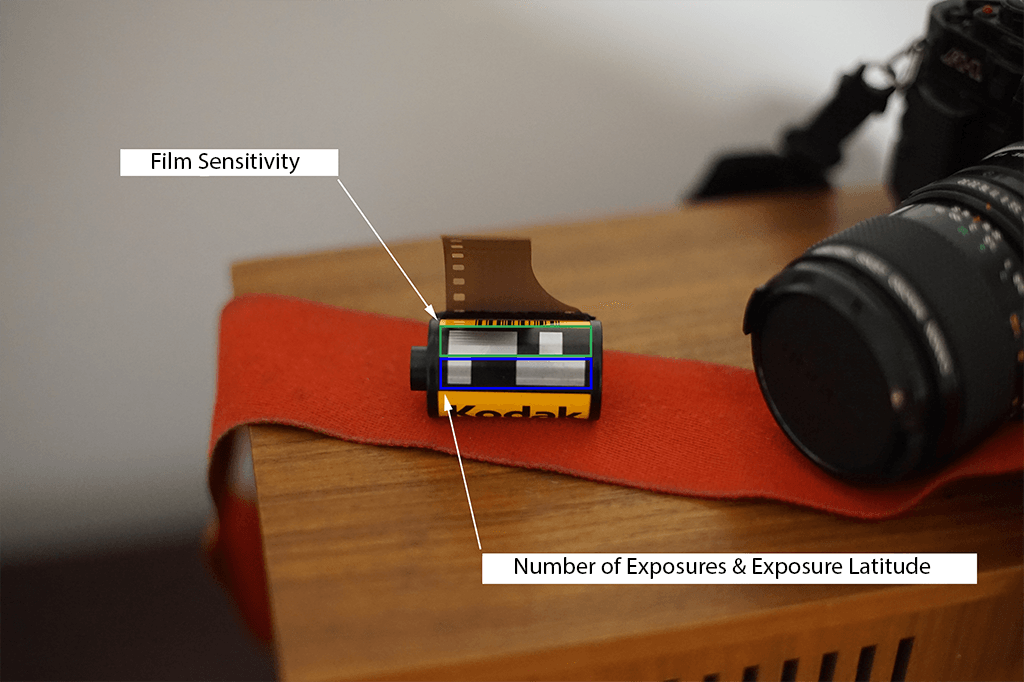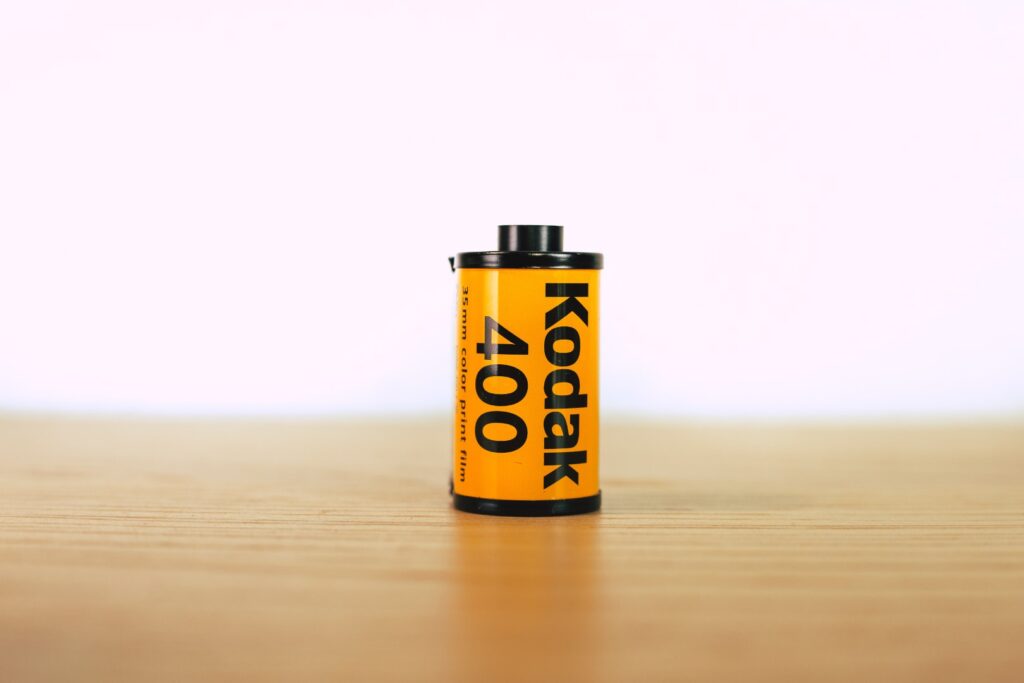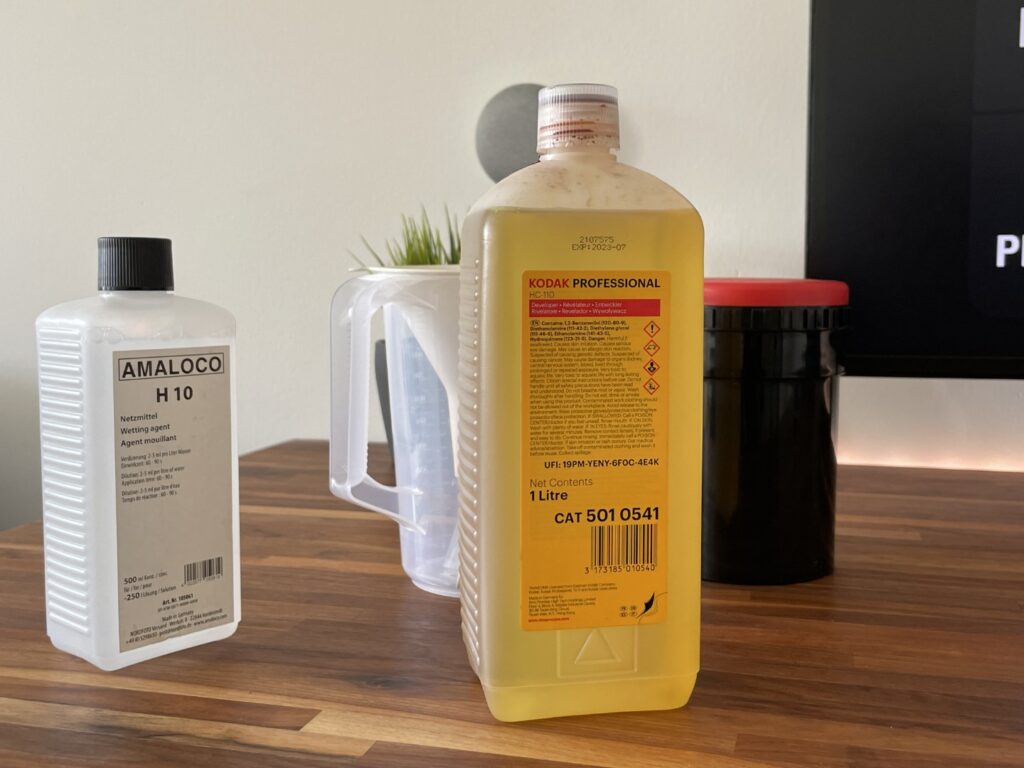Portra 400 is one of today’s most popular and well-known film stocks. Produced by Kodak and available for both 35mm and medium format cameras it is very popular among photographers and often recommended to beginners.
To help you get the best out of this iconic film stock, we covered the most asked questions by beginners and professionals in this article.

Why is my Portra 400 so Grainy?
Portra 400 is a rather fast film so it naturally has more grain from the start compared to a slower film like Portra 160. However, compared to competitors within the same film speed range it should produce a finer grain than most other film stocks. So if you experience very grainy images it is often due to one of the following reasons:
Underexposure
Maybe you took your shots in a low-light situation or you used a small aperture or the shutter was set too fast. Underexposing film usually results in more grainy and gray pictures. This is very easily noticeable when looking at the shadows of your image. Other reasons for underexposure are a faulty light meter, a camera running low on battery, or incorrect light measurements by the photographer.
Keep a close look at the exposure when shooting your next roll, try an external light meter, or shoot a test roll to check and determine where the error is.

Overdeveloping
Overdeveloping your Portra 400 can cause graininess as well. The extended developing time will cause more contrast and will therefore increase the visibility of the grain. It will also cause the film emulsion to clump together which will make the pictures grainier.
If you are developing your own film, make sure to keep a close eye on the development times, do not agitate more than required, and do not increase your processing temperatures above the recommended thresholds. Any of these reasons or a combination of all could cause a grainier picture than usual.
Scanning
If you are scanning your film at home by using a multi-use flatbed scanner like the Epson V600 or even a dedicated 35 mm scanner like the Plustek 8200i, it can happen that your images look a lot different than the scans you receive from your labs professional Frontier Scanner.
Don’t be disappointed by that, in order to get really good scans it is important to familiarize yourself with the software and post-processing. The big advantage of self-scanning your negatives is that you have more of the creative process in your hands and adjustments are easily made while you are steadily learning the post-processing techniques. Take a look at this comparison of an $ 8,000-dollar Noritsu with a pretty affordable OpticFilm Plustek 8200i and see for yourself.
What is the best place to buy Kodak Portra 400?
Buying Portra 400 should be pretty easy as it is a very well-known film and most shops have it in their range of products… Well, at least as long as there is no color film shortage. In case you are in the unfortunate situation that Portra 400 has become a scarce resource once again, I recommend just trying a different stock this time, maybe some Kodak Gold 200 or even a nice black and white film like the Ilford HP5. you can get all of these different films from one of the following sources:
- Amazon – Being the most popular retailer Amazon generally has about everything and of course also some Portra 400. If you are price sensitive this is usually the best place to buy. Check the current prices here.
- B&H Photo – A specialized photo and video retailer from new New York that also has an extensive online shop, if you are looking for expert advice this is the place to go.
- eBay – Probably your best bet during another color film shortage, but be prepared for some hefty prices. During the regular supply situation prices are competitive Check the current prices here.
- Your local lab – This is probably the most expensive way to buy your film, but you can talk to experts, support a local store and maybe make some analog friends as well
Always make sure to check the expiration date of your Kodak 400 and ask about the condition of the film before buying from a private seller. An expired or poorly stored film can turn out to be a waste of money, and it is definitely not a great feeling to collect a freshly developed roll of Portra 400 just to discover that the colors are flat and shifted.
Is Portra 400 DX Coded?
Yes, Kodak Portra 400 is a DX-coded film stock, nowadays most films that are still sold and in production are DX-coded, with few exceptions like Lomography or Fomapan films.
DX-coding means that the film cartridge has metallic contacts that can be read by most film cameras, especially point-and-shoot cameras or models that offer a fully automatic mode. The metallic contacts on the cartridges enable the camera to automatically draw information like ISO, film length, and exposure tolerance. If you are interested to learn more about this topic check out our article “What is DX-Coding”.

Is Kodak Portra 400 a C-41 Film?
Yes, Kodak Portra 400 is a film made for C-41 color-negative film processing. C-41 is considered the most common film processing system and in my opinion, it is also the easiest and cheapest to use for home development. Just grab yourself one of the easy-to-use development kits and give it a try. C-41 is a standardized process that makes it simple and reliable for labs and home users to get consistent results. My go-to kit is the Tetenal C-41 Colortec Kit.
Is Portra 400 a 35 mm Film?
35 mm film is the most common and popular choice for film photographers and especially beginners. Being a very popular and demanded film stock, it is no wonder that Portra 400 is available as a 35 mm film as well. This also answers the question “Can you use Portra 400 in a 35 mm film camera”. Yes, you can definitely do so, provided that you buy the correct format of the 3 formats available:
- 35 mm format – The most common format and compatible with all 35 mm cameras. The aspect ratio is 3:2
- Medium format – Medium format is larger than 35 mm and can produce a better-quality image. The aspect ratio is different with 4:3
- Sheet Film or Large Format – Basically anything that is bigger than 4×5 inches, sizes vary here. This I probably the most specialized use case but the quality is great of course.
What ISO is Portra 400 and which ISO should you shoot Portra 400 at?
Portra 400 has an ISO rating of 400 just as the name says. The film is designed to perform optimally when shot at ISO 400, but as a pretty versatile film, you can also choose to overexpose the film by setting your camera to a lower ISO, such as 200, or opening the aperture by a stop or two. This will result in a brighter, more pastel-like look which is a sought-after look on many social platforms.
If you want to create a more grainy look you could also choose to underexpose by shooting at a higher ISO like 800. Portra 400 will get pretty grainy when underexposed so it is not a usual look to go for. Just note that you should never deviate too far from the recommended ISO of 400 and you should be fine.
Is Portra 400 sharp?
Kodak Portra 400 is not necessarily marketed as a film that specializes in sharpness, it can produce detailed and very sharp images if used properly. Keep in mind, that sharpness in analog images depends on many factors, such as the lens used, the aperture, the shutter speed, and the light situation as well as the film stock used. Especially the scanning quality has a huge factor when looking at digitized film images. In general, the sharpness of the film itself is the least impactful in the equation and it should only matter for very specific use cases.
What is Portra 400 best for?
Portra 400 is a pretty versatile film that can be used for a wide range of things. It features a rather high ISO of 400 which makes it a good choice in many lighting situations. Kodak itself labels it as an ideal choice for portrait, fashion, and especially nature and outdoor photography with varying lighting conditions and fast movements. The following use cases are probably the most common ones but Portra 400 is not limited to them.

- Portrait photography – The natural skin tones and overall colors make it an excellent choice for portraits
- Wedding photography – Portra 400 is often used for wedding photography due to the warm and natural color palette, and the pastel-like look you can get especially when overexposed. The fast film speed of ISO 400 also makes it possible to capture those very special moments consistently when shooting indoors or in varying light situations.
- Travel – It is a well-known and often recommended film for travel photography. Take a look at social media to get an impression
- Documentary – Having a fast film with natural colors and a good grain pattern is crucial for documentary work
What does Kodak Portra 400 mean?
The question of what exactly Kodak Portra 400 stands for pops up pretty often, and is especially asked by film photography beginners, so let me explain:
- Kodak – the famous manufacturer of this film stock is the Eastman Kodak Company which was founded in 1892 and is probably the best-known brand in the analog film universe.
- Portra – Portra is the shortened version of “portrait”. This name was chosen by Kodak to highlight the ability of Portra 400 to accurately portray skin tones and colors. No wonder it is loved by portrait, wedding, and documentary photographers.
- 400 – The number 400 stands for an ISO rating of 400 which makes the film a “fast” or “high-speed” film. This means it is more sensitive to light and performs better in low-light situations while making it easier to capture movement.
Is Portra 400 discontinued?
No, Kodak Portra 400 is still produced and sold by Kodak, but the question if Portra 400 is still being made popped up a lot lately. The reason for that is the resurgence in the popularity of film photography in recent years and the related shortage of color film supply. The availability is growing again with manufacturers slowly ramping up their capacities but you should always be prepared for shortages depending on the market and location you are in. The steadiest online supply source with good prices I could find is Amazon.
Where is Portra 400 made?
The Kodak factory is currently located in the Eastman Business Park in Rochester, New York. This place was one the largest photographic product manufacturing facility in the world and their photographic film factory is still running even though the company had to sell a large number of assets.
What Color Temperature is Portra 400?
Kodak Portra 400, like most films today, is balanced for “daylight” which would typically be a color temperature between 5500K – 6500K. The Kodak C-41 emulsion being known for its golden colors is surely a bit on the warmer side of the range here.
Does Portra 400 need to be refrigerated?
Refrigeration is not really required if you do not plan to store the film longer than its expiration date. However, if you are living in a very hot and sunny area you should always aim to keep your film in a cool, dry place and avoid exposing it directly to the sun for too long.
Kodak itself recommends storing Portra 400 in the original sealed package at a temperature lower than 21°C (70°F). When storing your film for extended periods they recommend keeping the temperature below 13°C (55°F).
Why is Portra 400 so expensive and scarce?

Due to the ever-increasing demand and the manufacturers not being able to hold up with it, the prices for analog film have skyrocketed during the last few years. Some cameras cost five times as much as a couple of years before and film prices have more than doubled for some rolls.
For some time it was not even possible to get any Portra 400 from shops and suppliers. Film photography gained some more momentum during the pandemic and prices started to rise more and more. Kodak raised its prices step by step, the latest huge price increase being on March 1st with an increase of roughly 10-25% depending on the film stock. (check current prices here)
Partly the price and supply increases can also be explained by the supply chain issues Kodak was facing during the pandemic. Factories had to close, and cartridges were not readily available which led to delivery bottlenecks.
Does Kodak Portra 400 expire?
Yes, like all films Portra 400 has an expiration date which should be printed on the packaging of the film. After the expiration, it can happen that your film may lose its sensitivity to light and color accuracy will decline. To avoid this you should avoid exposing your film to heat, sun, and dampness.

Conclusion
In summary, Kodak Portra 400 has earned its reputation as a versatile and sought-after film stock among photographers, thanks to its natural colors and ability to perform well in various lighting situations. Throughout this article, we’ve addressed common questions about graininess, where to buy, how to store, and how to make the most of this film. Although its rising demand and occasional scarcity have led to increased prices, Portra 400 remains a favorite for both film photography newcomers and seasoned professionals. By gaining a deeper understanding of the factors influencing graininess, sharpness, and other aspects of image quality, photographers can fully embrace the unique aesthetic and creative opportunities that this classic film has to offer.



